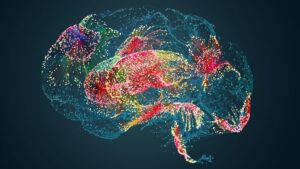Leidos Commits $10M to University of Pittsburgh for AI-Based Disease Detection

Collaboration Between Leidos and the University of Pittsburgh
Overview of the Partnership
Leidos, a prominent technology company, has announced a substantial investment of $10 million over five years in collaboration with the University of Pittsburgh’s Computational Pathology and AI Center of Excellence (CPACE). This partnership seeks to enhance the development and application of artificial intelligence (AI) in the healthcare sector, particularly focusing on the earliest detection and management of diseases such as cancer and heart disease.
Objectives of the Collaboration
The joint effort between Leidos and the University of Pittsburgh centers around several ambitious goals. These objectives aim to bolster research in digital health and to create innovative solutions that could revolutionize how diseases are detected and treated.
1. Establishing a Leading Research Hub
One of the primary aims of this collaboration is to enhance the existing Digital Pathology Research Center at CPACE. By investing in state-of-the-art facilities, the University of Pittsburgh will create an environment conducive to groundbreaking research in both digital pathology and AI-driven diagnostics. This initiative is expected to attract top talent and facilitate significant advancements in the field.
2. Developing Advanced Digital Healthcare Solutions
The partnership will support the creation and improvement of AI-powered technologies in healthcare. This focus will enable the University of Pittsburgh to maintain its leadership position in digital pathology, while also allowing Leidos to develop innovative tools that improve diagnostic processes and healthcare delivery.
3. Accelerating Global Impact
Leidos aims to leverage this partnership to implement AI-driven digital pathology solutions across both public and private healthcare sectors. The goal is to drive the commercialization of cutting-edge healthcare technologies, making these advancements accessible to a broader audience globally.
Impact of AI in Disease Detection
Leidos has extensive experience in the healthcare sector, having operated the National Cancer Institute’s Frederick National Laboratory for Cancer Research for over 25 years. This experience, combined with two decades of applying AI in critical sectors, positions Leidos as a key player in transforming healthcare delivery.
The introduction of AI in the detection and management of diseases promises several benefits, including:
- Faster Disease Detection: AI algorithms can analyze medical data and images more quickly than human practitioners, potentially leading to earlier diagnoses of diseases like cancer and heart conditions.
- Reduced Diagnostic Turnaround Times: The use of AI can streamline the diagnostic process, which traditionally involves multiple steps that can slow down patient care.
- More Effective Care Management: With quicker and more accurate diagnoses, healthcare providers can implement treatment plans sooner, improving patient outcomes.
Commitment to Future Healthcare Specialists
Leidos CEO Tom Bell emphasized the dual focus of this investment on technological advancement and the development of healthcare specialists. The partnership aims not only to speed up the detection and treatment of diseases affecting millions but also to train future generations of healthcare professionals. This initiative is particularly significant in expanding care to underserved communities, including veterans, who often face barriers in accessing quality healthcare services.
Summary of Benefits
This collaboration between Leidos and the University of Pittsburgh represents a significant step towards integrating AI into healthcare. The expected outcomes include:
- Establishment of an advanced research hub at the University of Pittsburgh.
- Development of innovative healthcare solutions that utilize AI technology.
- Broader adoption of digital pathology applications in healthcare settings.
Through these efforts, both organizations aim to significantly contribute to the healthcare landscape, improving patient diagnosis and treatment protocols on a global scale.






